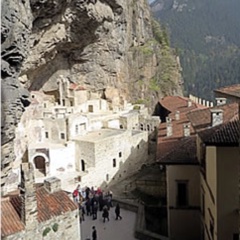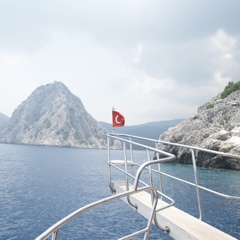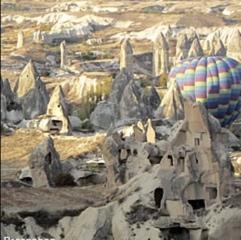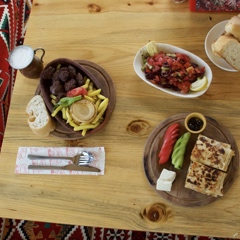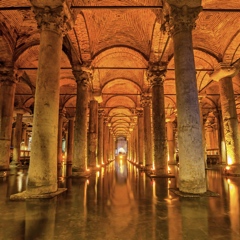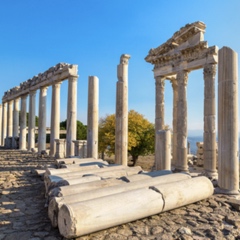Every year in mid-March the White Storks (Ciconia ciconia; leylek in Turkish) return to Selçuk to mate. (They also like the lofty plane trees in Istanbul‘s Gülhane Parkı.)
Their nests, made of sticks, are built on high points such as treetops, posts, columns, electric pylons and, in the case of Selçuk, the remains of a Roman aqueduct. A nest may weigh from 60 to 250 kilos (130 to 550 pounds).
These high perches afford safety as well as ease of take-off. (When you have a wingspan of 2 meters/yards, you need plenty of space to spread your wings and catch the air before you drop to the ground.)
During gestation it’s quiet time, with little activity in the nest:
I’m bidin’ my time…
Just over a month later the eggs (usually four of them) hatch, and the fun begins.
Both mother and father care for the young, taking turns foraging for food and water, and bringing them back to the nest.
As the babies grow, activity in the nest increases. Food is brought and the young fight to claim it. The mother and father may bring insects, earthworms, frogs, rodents, snakes or fish.
“The most fun is when they bring snakes,” says Mr Nazlı Uyanık, owner of the Hotel Bella, which has several storks’ nests well in view from the hotel’s roof restaurant.
“One time I saw two fledglings fighting over a snake. One would start to swallow it, then another would grab the other end of the snake and start to swallow it. They had a tug of war with the snake! It would go back and forth between them… This went on for hours!”
“Another time Mama Stork brought a fish. The young began to fight over it. A smart kitty saw what was happening, waited down below, and when the fight left the fish to fall over the side of the nest and drop to the ground, the kitty was there to grab it and run.”
Ready to take a chance…
The fledglings make short “test flights” above the nest, then graduate to flying to a nearby high point and back to the nest. The parents feed the young for several weeks after they’ve learned to fly, then the young are on their own. They leave the nest about two months after hatching.
By the end of August, most of the storks have left for winter quarters in sub-Saharan Africa, dreaming, no doubt, of when they’ll return to Selçuk next year.
Storks are mute, by the way—they have no pharynx. Although the young can make some squeaks and croaks, storks communicate by rapidly clattering their bills, a characteristic daytime racket in Selçuk.
If you don’t get to Selçuk during the nesting seasons, look for them at the tops of the lofty sycamore trees of Gülhane Parkıin Istanbul.
Storks visit other European countries as well. Here’s what they look like in Alsace, France. More…
—by Tom Brosnahan
| Ephesus Museum, Selçuk |



